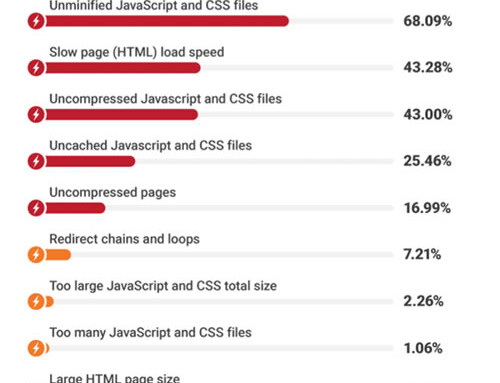Trends can be a difficult and ever-changing mystery – in fashion and in marketing, too.
With technology and aesthetic preferences shifting every couple of years, it’s sometimes daunting to think about how you will keep up.
But redesigning your website doesn’t have to be complicated.
It’s true that website design takes quite a bit of time, effort and money on your part, but the success it can have in securing the online sphere for your business is unparalleled.
Redesigning doesn’t just provide a new look to the site; it can also help improve its performance and the way you engage with prospective customers. So, providing the redesign is aligned with your business and digital marketing strategy, it can have real results.
Remember, your website is a vital part of your brand.
It only takes 0.05 seconds for a prospective customer to form an opinion on your website. As such, you’ll need to refine it and ensure that it serves its intended purpose.
How often should a website be redesigned?
If you’re considering a redesign, then it’s likely your website is already overdue a change.
A website should undergo consistent updates and adjustments to ensure the best performance over its lifetime.
The general guide for website redesign is three years, depending on the type of site and business you’re running. With regular maintenance this can be expanded, however a website redesign should always occur the moment you discover that the site isn’t meeting the needs of the business or company.
How can redesigning your website help?
Modernize your site
Expectations for website’s are constantly changing in the modern age, where almost everything is done via the web. As such, customers have become accustomed to aesthetically pleasing and well-designed websites.
According to Entrepreneur, even the colours used on your website can affect your conversation rate – so avoid browns and oranges!
As well as this, your website will have to ensure that it keeps up with the technological advancements in web design.
Redesigning your website can solve both of these problems, ensuring that your customers receive the best experience when they arrive on your site.
Reflect the company’s interests
A website that no longer reflects a company’s goals, mission and services is a website that doesn’t serve the business’ needs. This is likely the case if the business direction has changed over time.
Keeping these new goals in mind when you are redesigning your site can help you communicate your brand’s values better. After all, the website is the main source of information for your customers.
Improve usability
Usability is incredibly important for browsers. In fact, 90% of people on the web have left a website because it was badly designed at one point.
Similar to the layout of a store, a website will work best when your customers have an easy time navigating through the information. If your website includes a lot of imagery or out-dated script, it could be running a lot slower than it should be.
When redesigning the website in this manner, you can focus on the site’s structure and the overall user journey to help assess your changes.
These days, around 50% of browsing is done via mobile devices. This means that the usability of your website should be easily navigated through both desktop and mobile for the best results. Usability across all platforms is vital to ensuring traffic stays on your site and also shows customers you care about their user experience.
Help improve your SEO rankings
Consistent updates to your website design and content can help improve your search engine optimization (SEO). 75% of users scroll past the first page of search results, so if your website isn’t ranking for your chosen keywords, it’s time to think about a change.
Additionally, regularly updating your website can prove to Google that you are an active business, which certainly has its benefits.

How should you get started?
Set clear goals
You should always be clear about what you want your redesign to accomplish. Whether it is to fall in line with company changes, or to help boost your site on SEO, this reasoning is important to figure out how best to proceed. This is especially true if you’re working with a company to design the new site.
Discussing these goals with your team or your web developer will help ensure that each party knows what is expected of them, and you can formulate project deadlines based on these.
Conduct a Website Audit
Ensure that SEO and website optimization is planned from the beginning – the redesign should positively impact the performance of your website, after all.
A website audit on your old site will provide information on your SEO rankings and your domain authority. This can help inform where your website is suffering the most and how a redesign will assist in helping you rank in search engines.
49% of marketers report the best return on investment (ROI) through organic search results. As such, it is ideal to receive SEO advice from an expert who can tell you what parts of your website need improving and why this will assist with your SEO rankings.
There are many factors that feed into SEO, so an audit will help you get to the bottom of where your redesign can really help bump up your rankings. Then, you can plan these changes into the web redesign and reap the benefits!
Use data and analytics
You should know exactly who your customers are and what their user journey is before you begin redesigning your website. The needs of your users are an important aspect of any website and if your users are happy, this will inform how well your website performs elsewhere as well.
Understand where your website performs well for customers and where improvement is needed.

If you’re looking to kickstart the process of redesigning your website, then consider KMK Web Design. From assisting with the design itself to conducting audits of your current site, we’re here to help.






Leave A Comment